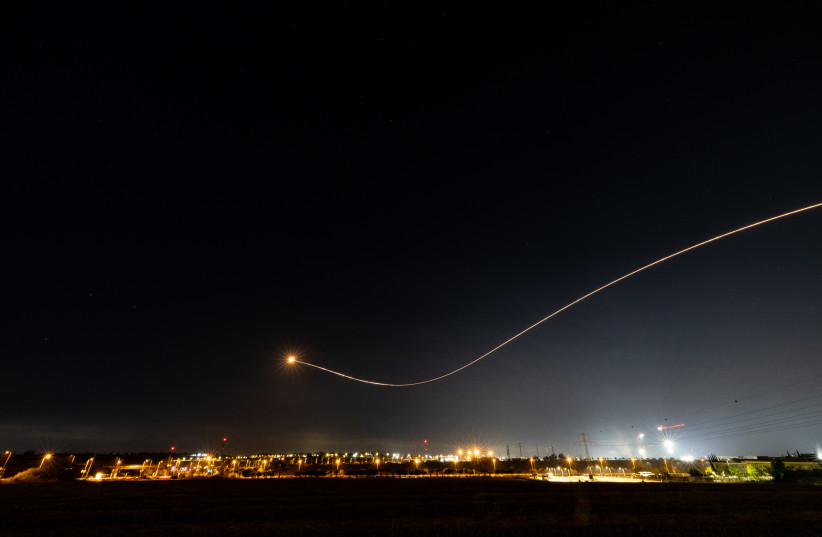There is a conflict between reports that the IDF is probing why the Iron Dome missile-defense system performed less well than expected on Tuesday afternoon, versus the statement by IDF Spokesman Brig.-Gen. Daniel Hagari on Wednesday morning that all is well with Israel’s prized system.
Among the background to the information conflict is that, until last month, there was a general progression of improved Iron Dome effectiveness against rockets from Gaza. Iron Dome was found to be 85% effective in November 2012 and 90% effective in 2014.
The effectiveness against the more than 100 rockets between Tuesday and Wednesday was still around 90%, Hagari said Wednesday morning.
However, during the volley of about 26 rockets from Gaza on Tuesday afternoon, the effectiveness of intercepting rockets that were actually threats was closer to 60%. That was also the time period when some of the worst hits and casualties on the Israeli side occurred.

How can the discrepancy be explained?
First of all, Hagari appeared to be referring to the full 100 rockets over the 30-hour period, whereas criticism and the internal probe seemed to be focused on the afternoon volley of rockets from Gaza.
Might the afternoon rockets have caught Israel more off guard? It is possible that the IDF had not moved all of its Iron Dome batteries into place or did not have those batteries fully staffed in the afternoon, and it may have even been slightly fooled to let its guard down after only a few rockets were fired Tuesday morning.
In contrast, by Tuesday evening and Wednesday morning, the IDF had most of the day to prepare and also was expecting more rockets from Gaza, because the IAF had plans to strike the terrorist groups’ assets.
This same readiness issue could explain why the IDF hit a record level of effectiveness in August 2022. That operation, more than many others in the last decade or so, was carefully planned by Jerusalem, instead of falling into an unwanted war by accident as in some other instances. However, sources indicated that general readiness was not the reason for the dismal performance of Iron Dome on Tuesday afternoon, and they said the IDF would likely issue a report on the issue in the coming days.
Finally, the “drop” in effectiveness was still not terribly significant, and it might not have been noticed at all except that in some of the rocket fire episodes against Israel in the North in early April, there was also a drop in effectiveness.
The reason that this is currently debatable is because only a small number of rockets got through the missile shield, and no Israelis died. In fact, the greater concerns are more about the future: If there is a new flaw that Gaza has learned to exploit, would more Israelis be in danger if there was a longer conflict with thousands of rockets fired?
Moreover, at a strategic level, having Iron Dome at 85%-96% effectiveness gives the Israeli government more flexibility in extending a conflict by hours or days to achieve certain goals, rather than if the government were more worried about Gaza’s rockets succeeding in killing substantial numbers of civilians.
However, these capabilities are not expected to impact the IDF’s operations the way that the S-300 antiaircraft missile system did in Syria, when Russia installed that far-more advanced system there. One reason is that even the most advanced SA-18 has only a range of 5,000 feet, and most Israeli aircraft striking Gaza do so from above 10,000 feet. There have been no reports of any hits or even close calls by the SA-18 against Israel’s advanced aircraft maneuvers and proactive defensive and decoy capabilities.
The one area where some of these antiaircraft systems could make a difference could be against Israeli helicopters, which are less often the weapon of choice during rounds of airstrikes. In 2006, Hezbollah did succeed in shooting down an Israeli helicopter.
But as long as helicopters are used strategically, and taking into account that Israeli helicopters now boast some new proactive defensive systems, it seems that Hamas’s antiaircraft defenses will be mostly for show.
Overall, despite some hiccups in these areas, Israel still is in the driver’s seat from a strategic perspective if it chooses to undergo a longer operation in the future.
